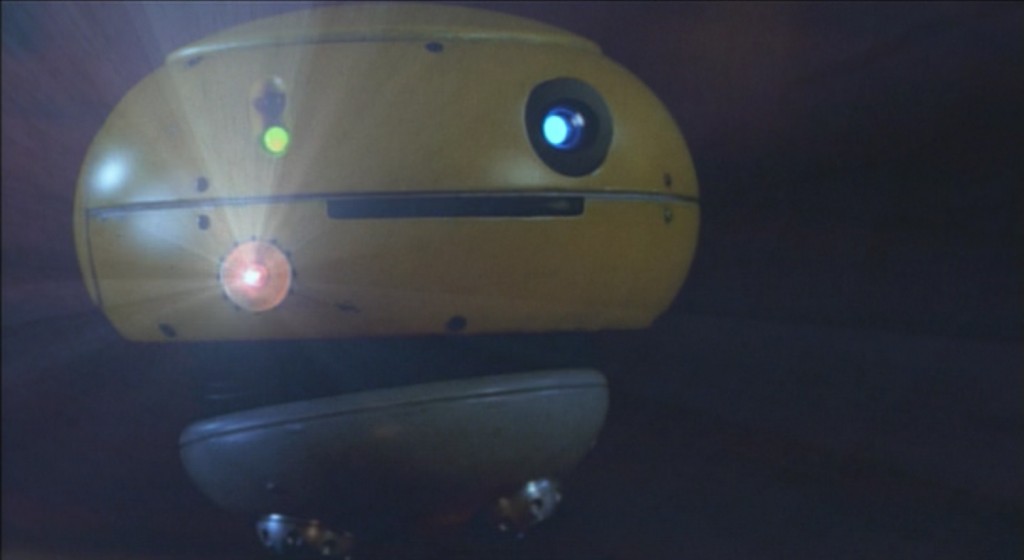
This is a build log of my most recent project, Weebo! Weebo was Dr. Brainard’s assistant in the 1997 Disney film “Flubber” with Robin Williams. I always loved this little flying robot as a kid and recently while working on another project of mine I hit a road bump that gave me a couple weeks to work on something else, so Weebo started to be born. (read more below)
This Project was not meant to be a step by step easy guide for someone to follow along and build like Legos. It still takes a lot of modifying and figuring out yourself. This is more of a rough walk through of what I did. That being said, It can be done! Its not hard, but takes time and some skill. Its a great little robot to get started learning animatronics. Check out the links and files below!
Weebo Build Logs
Pt 1 – Pt 2 – Pt 3 – Pt 4
Downloads
Parts List
Reference Photos
Weebo Videos

So I first started this project by watching the movie for the first time since I was a child. It made me fall more in love with the film and Weebo and only encouraged me to start building. I searched around the internet for any reference material I could find. Not only was there almost nothing out there on Weebo other than some screen grabs, there was almost no built to scale replicas. I did find a couple though. Found on that someone built for fun, but was not accurate at all. Found another one on PropMasters that sold years ago and did not have much information on her except for a dimension of 10 inches, but no telling what that 10″ actually was.
I then discovered that Epcot at Disney World Orlando had a Weebo on Display. Well what do you know! I am only a couple hours south of Orlando so why not go check it out. Unfortunately she is behind glass beyond some rope that I couldn’t cross. But I got some photos and realized that this was not movie accurate. It must have been a replica made for Disney and wasn’t from the film.
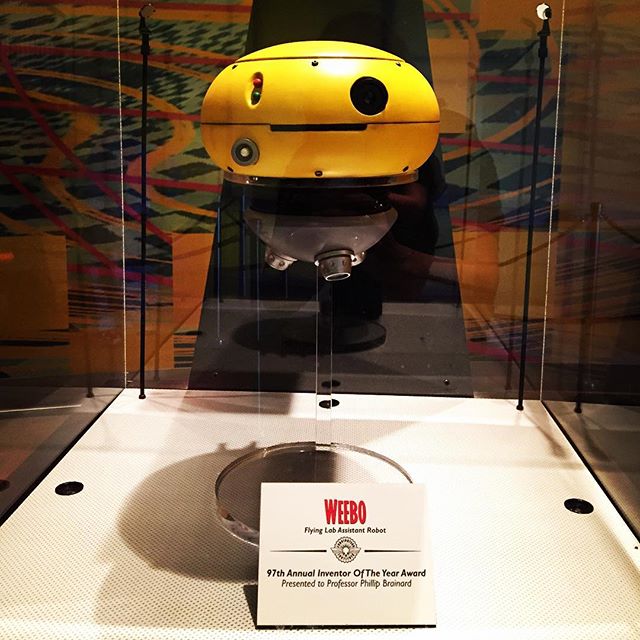
As you can see in the photo above, its pretty convincing! Maybe it was a prototype made before the film?
I am not sure. But a dead give away are the Jets. They are just no accurate in the least. Also the LEDs are not LEDs, just painted. But that’s ok with me, any little bit helps. So I figured I had to come up with it on my own.
Going off what PropMasters stated, that Weebo was 10″, I started using a screen grab as a measurment reference. What I knew a size had to be was the Green/Red LEDs. They come in a couple common sizes, 3mm, 5mm and 10mm. So I used a 5mm reference to see how wide weebo would be… about 5 inches.. Not big enough, but at a 10mm LED would make Weebo 10 inches, a number that matched up with PropMasters. Now we are getting somewhere! I can use that information to get a good idea of the size of most of Weebos parts as seen here.
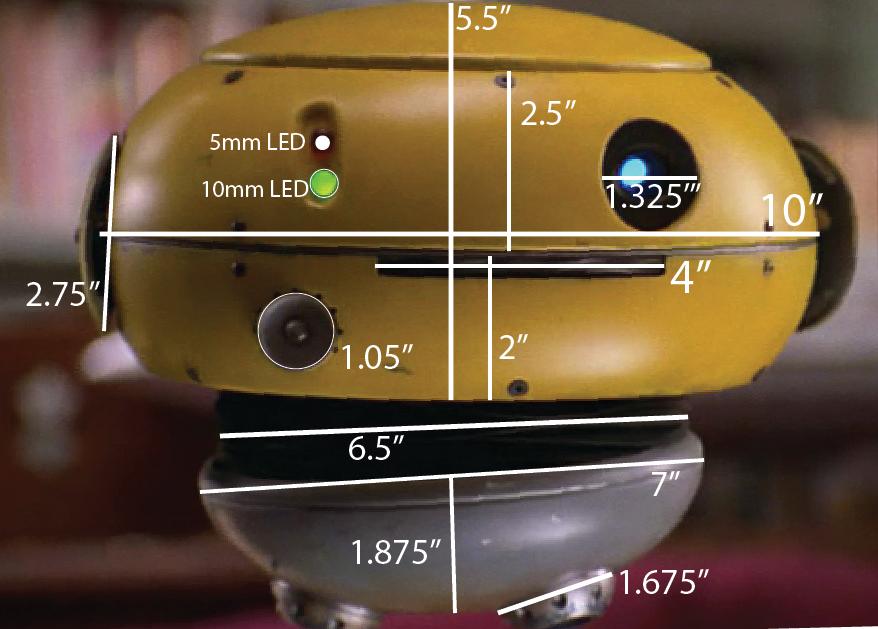
So now I have a solid base to work off of and get my dimensions. Yes its all estimated and is by no means accurate to the thousandths, but it will definitely work. So I took this information and started designing Weebo in Autodesk Inventor. I have done some work with inventor, but have been looking for a reason to really understand 3D design and also assemblies within Inventor. Assemblies allow you to put all of your parts together and see how they align and move according to there pivot points ext. This is perfect for trying to design a animatronic like Weebo with servos and linkages.
So I started with her head, adding details and parts as I went. I knew this wouldn’t fit on a 3D printer in one shot, so I designed it in a way that would be easy to print and the least amount of overhang. It consisted of some main parts like the frame, top half of head, lower half, screen lid and lower engines. (more information on all of this in my build logs)
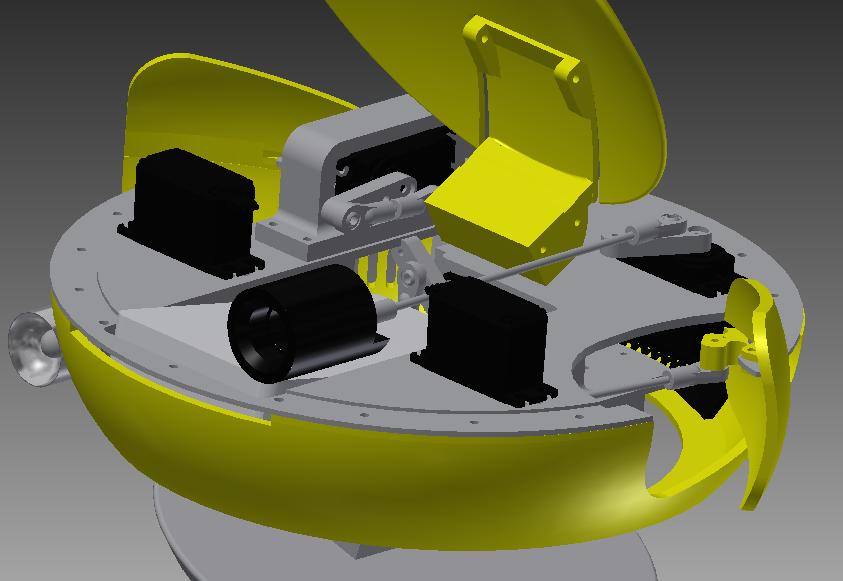
Well it was at this point that I started printing some parts and doing some test fitting when somthing funny happened. I was watching videos from Tested.com on YouTube. I normally like to watch these videos, but one I was watching this day was of Adam Savage in his shop. I noticed in the background in his display cases that he had a Weebo! Knowing Adam used therpf.com forum often, I shot him a message with my ideas and that I saw his Weebo prop and asked for some reference information like photos and dimensions. Well being the helpful guy he is he sent me over about 40 photos and dimensions (all of those are here) So I got to modifying the files and getting Weebo printed.
Now to bring Weebo to life was a whole other set of challenges. I knew I had about 13 Servos that needed to be controlled along with Audio, Videos and Lighting effects. I had some background with Arduino programmings, so Lighting and Servos were no problem. Even audio I have done with Arduino in the past, but videos.. that’s a different problem. So the Raspberry Pi came to the rescue. This would be the first time I have ever used a Pi but felt very familiar to my Arduino programming using Python.
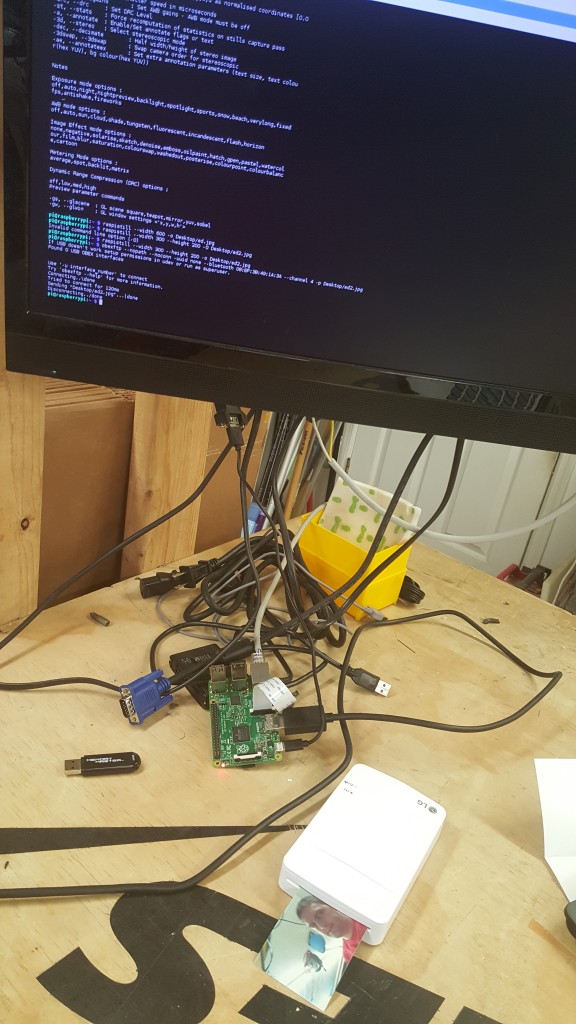
Now for Weebos Screen. She used this screen to show data and express emotions though displaying clips from old movies. Very creative and I HAD to have it! Now in the film, it was all added digitally in post, but with newer technology in LCDs in the last 15 years I was able to get a real screen inside Weebo. This took a lot of work. I purchased multiple LCDs to tear down and attempt to get to fit. I broke a couple but ended up having a working LCD inside Weebo’s Lid. EXCELLENT.
So a HUGE benefit to using the Raspberry Pi was the ability to handle a camera. In “Flubber” Weebo at one point took a photo of Professor Brainard (Robin Williams) and had a Polaroid style photo printed out. This was something I thought would be amazing but didn’t think it was possible until I discovered a mini pocket printer. LG makes a small photo printed that uses Bluetooth to print photos from a proprietary app on a phone. Well to my surprise someone online discovered if you take a Raspberry Pi and Bluetooth a .jpg to the printer’s ID number that the printed would just print it out. PERFECT! So now Weebo can take a photo and then spit out a print, just like the movie! After modifying a old GE Magic Cube flash with a newer style flash bulb, I had a working Weebo Photobooth!
Now the one thing I would not be able to recreate is flight. Weebo had the ability to fly around in the movie, but too bad it was just movie magic… because how cool would a real flying Weebo be! Well that’s the one thing that I could not make my Weebo actually do. So instead I used a robotic arm system that I pieced together using parts from servocity.com . The arm comes up the back of Weebos base and holds her up with a mount through the rear vent. This arm has 3 axis of movement to attempt to recreate that “flying” feeling. It has a Roll, Yaw and Pitch controls. This allows Weebo to tilt foward and back, twist side to side and also pan left to right across a distance of about 12″. When you combine these movements with animation from the other servos you get a decently realistic flight simulation.
For the film, they used a system that mounted Weebo to a steady cam type system attached to an operator. She also had a couple other puppeteers controlling her other movements, like lid open and close, her ears and eye with cables. In the video below (@3:07), towards the end, you can see a live video of the operators making Weebo come to life. This is spectacular and was actually requested by Robin Williams as he preferred acting with a practical prop than CGI.
Well the final touch on Weebo is her voice and the videos and images she displays on the screen. I maybe recognized half of the videos she played, but couldn’t tell you exactly which movie or cartoon they came from. That is where the replica prop forum came to the rescue (again). I took screen shots from every time Weebo opened her lid and posted about 15-20 of them on a post asking members if they recognized the footage and if they could tell me where it was from. Those guys rock! They found A LOT of them! Here is the original post on therpf.com ( http://www.therpf.com/showthread.php?t=257895 ). I picked a handful that I liked and started trying to figure out how I wanted the audio.
The first thing that comes to mind for audio, her voice, would be to just take audio clips from the movie itself. This doesn’t work as well as you’d like. You end up hearing background music and noise that just feels out of place when making a standalone prop. So I had to recreate it, but how? Well trying to use the original voice actress is out of the question seeing how it was the talented Jodi Benson (also voice of Arial from Little Mermaid). When trying to figure this out I stumbled across a site called voice123.com. This is a place where you can hire voice actors and actresses for a specific project, like a commercial or radio jingle. Well I wanted Jodi Benson’s voice, so that is what I asked for. I started a project on the site to hire someone who could recreate Jodi’s voice. I included a line from the movie with a reference clip and asked for auditions. I received about 20 and one voice just killed it. Her name is Debbie Gatton ( http://www.debbiegatton.com/ ) and she an extremely talented voice actress that really nailed Weebo’s voice. She actually spent her childhood admiring Jodi Benson and always wanted to be like her. So that was perfect for me. You can see in the video below reference material I sent her and then the related animations and her voice right after in the replica Weebo. I highly recommend her.
Well that pretty much sums up the process I went through to create my very own Weebo. Check out the build logs and reference material I included and you might as well download the free STLs and 3D print your very own! All of the audio and video and coding I have included here to allow you to attempt to build your own. Email me with any questions and I hope you enjoyed seeing the process.
Ed


